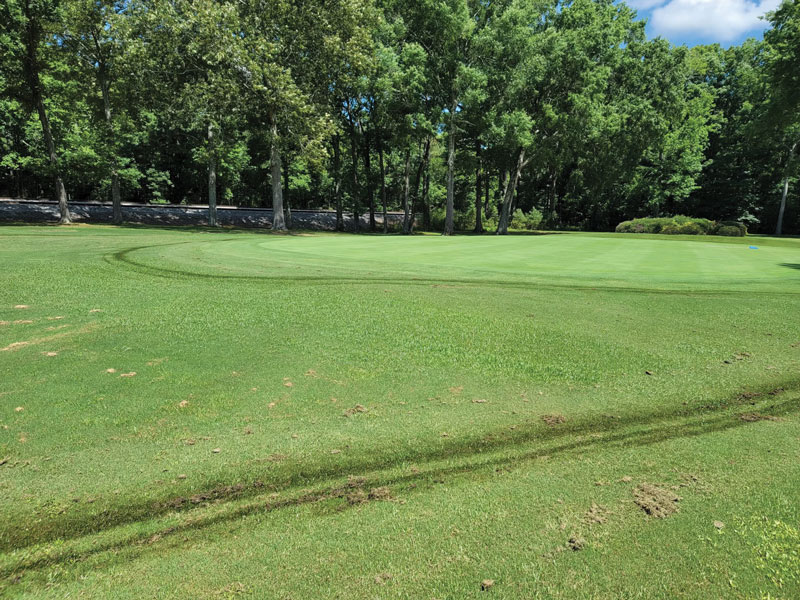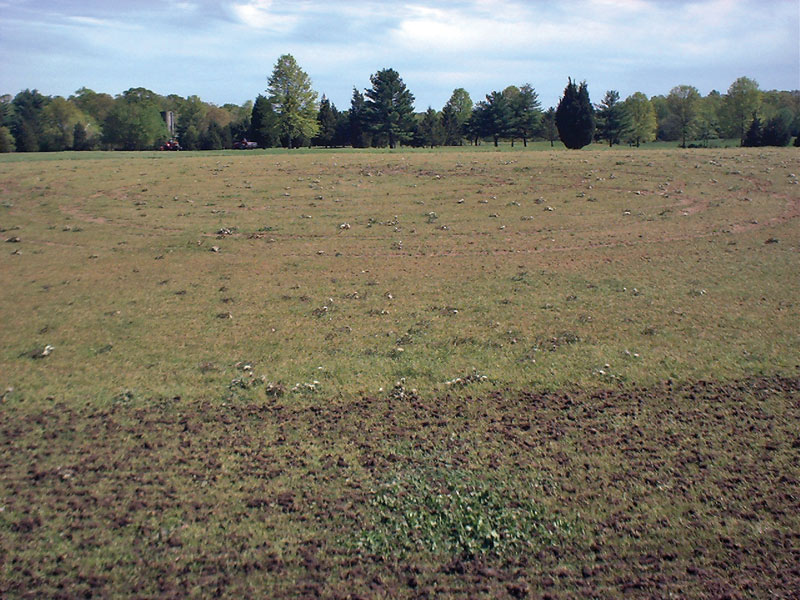GCM’s Photo Quiz is presented in partnership with STEC Equipment.

Problem A: Dark lines approaching then encircling green

Location: Russellville, Ala.
Turfgrass area: Fairway and surrounds
Turfgrass variety: 419 bermudagrass and bentgrass greens
Problem B: Dandelions on green

Location: Salem, N.J.
Turfgrass area: Putting green
Turfgrass variety: Bentgrass/Poa annua mix
Scroll down for answers.
Problem A: Dark lines approaching then encircling green
These dark lines were obviously caused by a hydraulic leak. Nearly everyone who maintains a golf course will experience this issue at one time or another. In this case, a hydraulic hose blew off the course’s 1990s-vintage fairway mower. Luckily, the leak was caught right away, so only one hole was affected.
Editor’s note: When hydraulic oil gets on putting greens, is it the heat that kills the grass? Is dish soap really the best remedy for damage? An overview of the scientific research separates fact from folklore.
The heat from the oil almost immediately turned the turf dark green, then black. Crews immediately and thoroughly washed the area with water, then used a zero-turn-radius mower and cut the grass as short as they could to remove as much fluid from the blades of grass as possible to keep any further damage to a minimum. Complete recovery of the area took about four to six weeks.
Photo submitted by Don Walker, owner/operator of Twin Pines Golf Course in Russellville, Ala.
Problem B: Dandelions on green
This photo from 2006 shows dandelions on the putting greens — a result of a paperwork error of sorts — at a 27-hole public course. After a long period of drought in the late 1990s, New Jersey started to require water permits for golf courses. This course failed to comply with the new regulations, so in June 2005, the state shut down its irrigation system. It had been shut down for 10 months when a new management company assumed control of the property and got the paperwork corrected.
In the interim, much of the Poa annua as well as some of the bentgrass on the greens died, and dandelions — along with several other broadleaf species — took over. The greens were deep-core-aerified, and a selective herbicide for broadleaf weeds was applied, as well as fertilizer. About three weeks later, the area was verticut in two directions, and bentgrass was interseeded into the existing turf. The course was playable about 10 months after the process began.
Photo submitted by Timothy Walker, CGCS, superintendent at Leewood Golf Club in Eastchester, N.Y., and a 23-year GCSAA member. The golf course shown in the photo is in Salem, N.J.
Editor’s note: Have a photo of an on-course anomaly? GCM would love to have a look! Email it to Photo Quiz author John Mascaro.
John Mascaro is the president of Turf-Tec International.